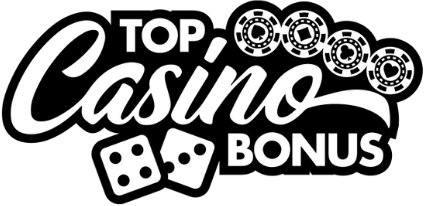Understanding poker hand rankings: from high card to royal flush
If you’ve ever sat at a poker table and watched someone push all their chips in with what turned out to be a measly pair of threes, you’ll understand the difference between knowing the rules, and understanding the game. And at the heart of poker is a concept that too many newcomers take for granted: hand rankings. Knowing them by rote isn’t enough. You’ve got to feel them, recognize them mid-play, and anticipate how others react to them. Let’s walk through the pecking order, high card to royal flush, not as a list to memorize, but as a battleground of hierarchy and strategy.
Table of contents
Grasping the invisible balance of power
Every hand you’re dealt has an inherent potential, not just based on math, but on psychology, position, and pressure. Understanding poker hand rankings isn’t just about knowing which combination beats what. It’s about immediately processing the strength of your five-card combination in the context of what your opponents may be holding. And trust me, there’s no substitute for this kind of streetwise calibration.
High card: the silent loser
Let’s start with the loneliest place in the ranking, the high card. No pairs, no straights, just five unrelated cards. When all else fails, the highest one wins. A classic novice mistake is overplaying an ace-high hand thinking, “Well, it’s the highest.” Sure, in a multi-player pot full of garbage, that ace might carry some weight. But it’s walking on eggshells most of the time. Don’t lean on it unless you’re exploiting position or reading weakness.
One pair: the beginner’s comfort zone
Novices cling to a single pair like a lifeline. But poker’s a predator’s game, and one pair, especially low pair, makes you prey more often than predator. Watch how your opponents behave post-flop. Did they raise pre-flop aggressively? That pair of eights in your palm may quickly wither in front of a board with two overcards and a smooth bet. You need more contextual reading, and that takes time, and mistakes.
Two pair: the deceptive trap
Players often misplay two pair because it *feels* so solid. And it is, unless it faces coordinated board textures. If the flop brings suited or sequential cards, two pair can get cracked by flushes or straights. Learn to separate vulnerable two-pair combos from true power ones. Bottom two pair on a connected board? That’s house-of-straw territory. Top two pair with a dry board? You might have the table hog-tied.
Three of a kind: stronger but exposed
Trips seem powerful, and they often are, especially if you hold the pair in hand rather than hit it on the board. But they’re like an open flame: useful, but risky. It’s not just about hitting trips, it’s about recognizing whether they’re “set” trips (from a pocket pair plus a board match) or “board” trips (when the board pairs and you match it). Sets are hidden killers, board trips are obvious and easy to counter.
From valuable to vicious: the elite hands
The next tier of hand rankings is where real damage is done. But the thing is, people often overestimate how often these fall into your lap. In reality, hitting them takes patience, awareness, and just the right amount of guts to extract value when they do come.
Straight: vulnerable strength
Five consecutive cards of any suit might seem bulletproof, but straights are fragile warriors. Why? Because they’re exposed to overflushes and full houses. And missed outs can lead you off a cliff if you’re chasing recklessly. More than once, I’ve watched a player shove with a queen-high straight, only to get thumped by a backdoor flush. They ignored the texture of the turn and river. Don’t be that easy prey.
Flush: elegance wrapped in chaos
Your five cards dance in harmony, all suited and synchronized. But before you puff your chest with pride, remember, not all flushes are created equal. A low flush is practically bait when you’re up against someone slow-playing a king-high or ace-high flush. Use blockers and betting patterns to sniff out whether you’re ahead or drawing dead. Anyone who’s studied how to win at blackjack knows about sizing your edge, poker flushes demand that same precision.
Full house: the efficient executioner
This hand shuts down most bluffers mid-sentence. Three of one, two of another, full houses are where the rubber meets the road. Still, context is king. If the board double-paired itself, chances are you’re not the only one holding a full house, and suddenly kicker strength becomes your lifeline. I’ve folded under a full house before, not because I liked it, but because I knew I was outkicked.
Four of a kind: the stone-cold killer
Quads are dramatic, unforgettable, and rare. But when you hit them, play it like you’re building a sandcastle: gently. If you go in guns blazing too soon, you’ll scare off all the money. Slow-playing four of a kind takes nerve and timing. You need someone else to believe they’re strong enough to dance with you. And when they do, make them pay the full ticket.
Straight flush and royal flush: mythical hands
Ninety percent of players will go months, even years, without seeing one in a live game. But when they come, they’re thunder from the gods. A straight flush is five consecutive cards all in the same suit, beautifully structured and almost always unbeatable. And the royal flush? That’s the king of kings: 10 through ace in one suit. Honestly, if you hit a royal, milk it like an old dairy farmer wringing his last cow, it ain’t coming again soon.
Beyond the cards: behavior and discipline
If you only focus on hand values, you’re playing checkers on a chessboard. Half the game lives in betting patterns, timing tells, and what isn’t said. Understanding your opponents, what they raise with, when they check nervously, how they buy time, that’s your real edge. Consider how players in more psychological games, like those diving into the psychology of choosing roulette numbers, leverage mindset over math. That idea lives in poker too.
Respect for the table and its stakes
I’ve seen players with better ranking knowledge lose to those with better composure. That’s why no hand analysis is complete without a nod to control, emotional and financial. Poker isn’t isolation. It’s decision-making under pressure, with real money on the line. Always review the lessons found in responsible gambling to remind yourself that discipline beats hot-headed gambling nine games out of ten.
The final read
Learning hand rankings is just your rite of passage. Mastering how and when to bet them, fold them, or trap your opponents, that’s the real craft. It’s not unlike baccarat, where understanding betting structure enhances your performance. Those who truly study baccarat and punto banco know that the nuance lies between the bets, not just the cards.
The truth is this: rankings are your alphabet, but how you sequence them becomes your grammar. Only with time, intuition, and ruthless self-analysis will you turn that grammar into poetry at the table. Just like the seasoned blackjack veterans who grasp every nuance on how to win at blackjack, true poker masters become fluent in pressure, patterns, and patience.
Know the hands, that’s step one. But never forget: the real game starts when the cards stop speaking, and your decisions start counting.





0 Comments